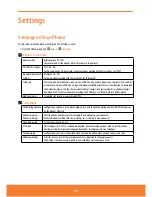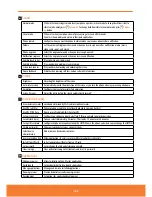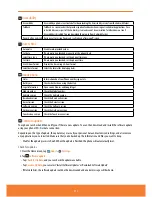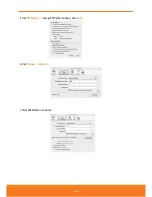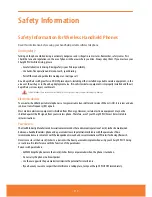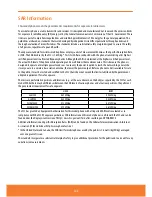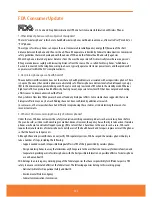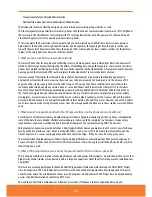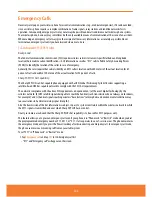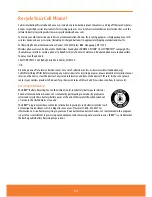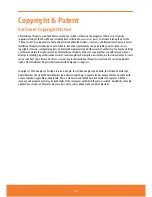
Hearing AID Compatibility with Mobile Phones
When some mobile phones are used near some hearing devices (hearing aids and cochlear implants), users may detect a
buzzing, humming, or whining noise. Some hearing devices are more immune than others to this interference noise, and
phones also vary in the amount of interference they generate.
The wireless telephone industry has developed ratings for some of their mobile phones, to assist hearing device users in
finding phones that may be compatible with their hearing devices. Not all phones have been rated. Phones that are rated
have the rating on their box or a label on the box.
The ratings are not guarantees. Results will vary depending on the user’s hearing device and hearing loss. If your hearing
device happens to be vulnerable to interference, you may not be able to use a rated phone successfully. Trying out the
phone with your hearing device is the best way to evaluate it for your personal needs.
M-Ratings: Phones rated M3 or M4 meet FCC requirements and are likely to generate less interference to hearing devices
than phones that are not labeled. M4 is the better/higher of the two ratings.
T-Ratings: Phones rated T3 or T4 meet FCC requirements and are likely to be more usable with a hearing device’s telecoil
(“T Switch” or “Telephone Switch”) than unrated phones. T4 is the better/higher of the two ratings. (Note that not all
hearing devices have telecoils in them.)
This phone has been tested and rated for use with hearing aids for some of the wireless technologies that it uses. However,
there may be some newer wireless technologies used in this phone that have not been tested yet for use with hearing aids.
It is important to try the different features of this phone thoroughly and in different locations, using your hearing aid or
cochlear implant, to determine if you hear any interfering noise. Consult your service provider or the manufacturer of this
phone for information on hearing aid compatibility. If you have questions about return or exchange policies, consult your
service provider or phone retailer.
Hearing devices may also be measured for immunity to this type of interference. Your hearing device manufacturer or
hearing health professional may help you find results for your hearing device.
The more immune your hearing aid is, the less likely you are to experience interference noise from mobile phones.
Safety Information for FCC RF Exposure
Read this information before using your Sharp FX PLUS.
In August 1996 the Federal Communications Commission (FCC) of the United States with its action in Report and Order FCC
96-326 adopted an updated safety standard for human exposure to radio frequency electromagnetic energy emitted by FCC
regulated transmitters. Those guidelines are consistent with the safety standard previously set by both U.S. and international
standards bodies. The design of this phone complies with the FCC guidelines and these international standards.
Body-worn operation
This device was tested for typical body-worn operations with the back of the phone kept 2.0 cm from the body. To
maintain compliance with FCC RF exposure requirements, use only belt-clips, holsters or similar accessories that maintain
a 2.0 cm separation distance between the user’s body and the back of the phone, including the antenna. The use of belt-
clips, holsters and similar accessories should not contain metallic components in its assembly. The use of accessories that
do not satisfy these requirements may not comply with FCC RF exposure requirements, and should be avoided.
For more information about RF exposure, please visit the FCC website at www.fcc.gov.
119
Summary of Contents for AT&T FX PLUS
Page 1: ......




